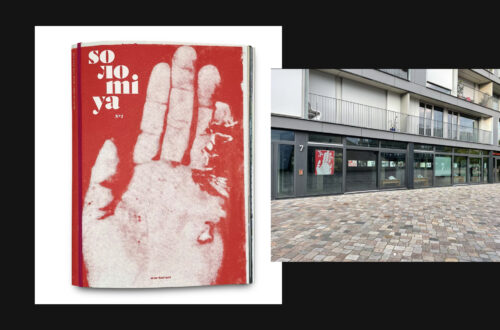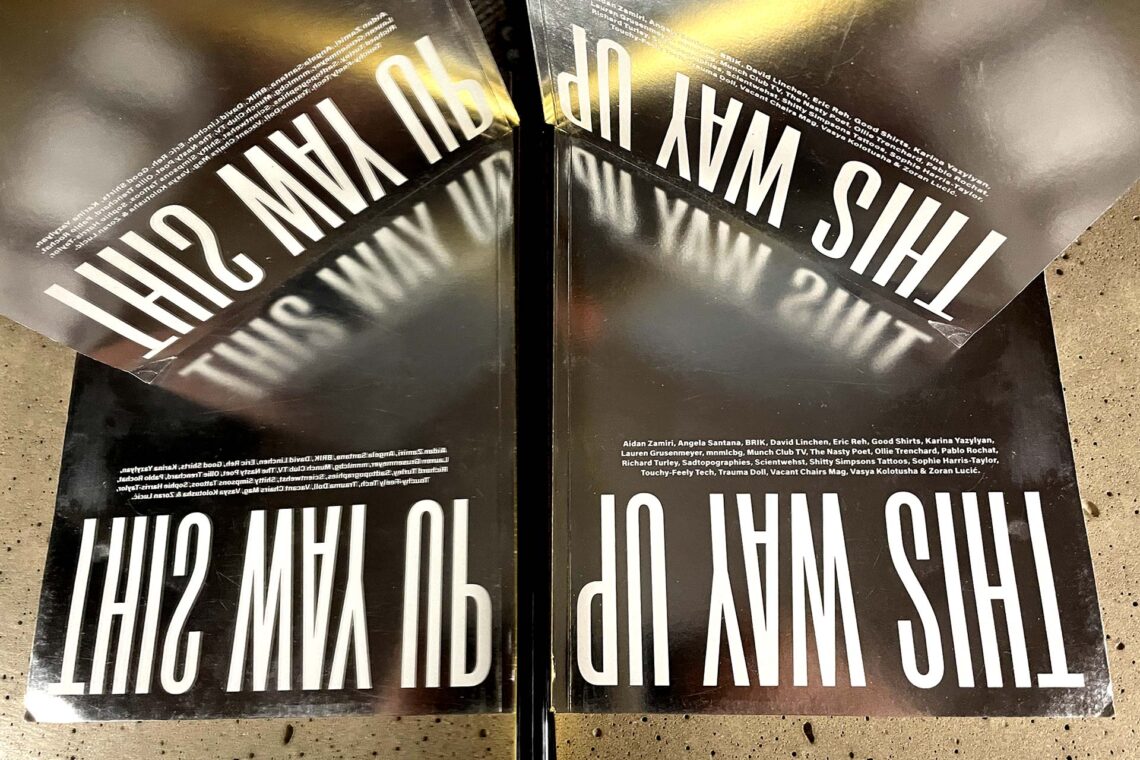
This Way Up founder Adam Hunt talks inner confidence with issue two
Development is a big word both figuratively and linguistically; It’s a concept that many of us adopt to ourselves in daily life, be it professionally or personally. Adam Hunt, the creator of creative and lifestyle magazine ‘This Way Up‘ (TWU) speaks to me about why development was the focus for issue two. Even with issue one’s success, Adam asked himself, “Will anyone care? Will anyone buy it? Am I wasting my time and money?” But ultimately drew upon his gut instincts to bring the new issue to fruition. A designer by day at London advertising agency Wieden+Kennedy, Adam’s issue two of ‘This Way Up‘ highlights a range of creative people including contributors: Aidan Zamiri, Angela Santana, BRIK, David Linchen, Eric Reh, Good Shirts, Karina Yazylyan, Lauren Grusenmeyer, mnmlcbg, Munch Club TV, The Nasty Poet, Ollie Trenchard, Pablo Rochat, Richard Turley, Sadtopographies, Scientwehst, Shitty Simpsons Tattoos, Sophie Harris-Taylor, Touchy-Feely Tech, Trauma Doll, Vacant Chairs Mag, Vasya Kolotusha and Zoran Lucić.
Hi Adam! Firstly, congratulations on issue two! I bet it’s been a long time coming?
Hi and yeah, thank you. It wasn’t intentional, or for lack of trying, but it’s been a little over 4 years since the first issue (🙈). I’m very proud for it to be out though. This one took me around a year and a half to complete. It can be tough to find the time, This Way Up is a personal project of my own and fitting it in around a full time job, global pandemic and a personal life isn’t always the easiest.
Now it’s out in the world, how has the reception been?
Overall the reception’s been really positive. Thank you to everyone who’s bought one, you’re all fantastic humans and I love you. If I was to compare it to issue one, there’s been less buzz around this issue for sure, though. I think this was down to a few things. I wasn’t able to sort out a launch party, at the end of 2021, due to Covid and running out of time pre-xmas. Plus the first issue was featured on a few different blogs, which I didn’t push as hard this time around. Tbh both those things don’t really bother me. The main thing is I’m happy and I did it; other people can make up their own minds if they like it or not.
"I find the process incredibly rewarding, speaking to all these incredible people about the things they love to do in their spare time. It’s exhilarating hearing them talk with such passion."
Adam Hunt, ‘This Way Up’ Founder and editor
The issue is named ‘development’ – is this relating to personal/creative development?
Both, really. I mention this in my editors note; the reason I decided to go with ‘development’ as the issue’s theme was because of the neat parallel between a main reasons why people start side projects, to grow, learn and better themselves personally or professionally and TWU graduating into it’s second issue. It just felt right. I have to say though, honestly, I keep the themes extremely loose.
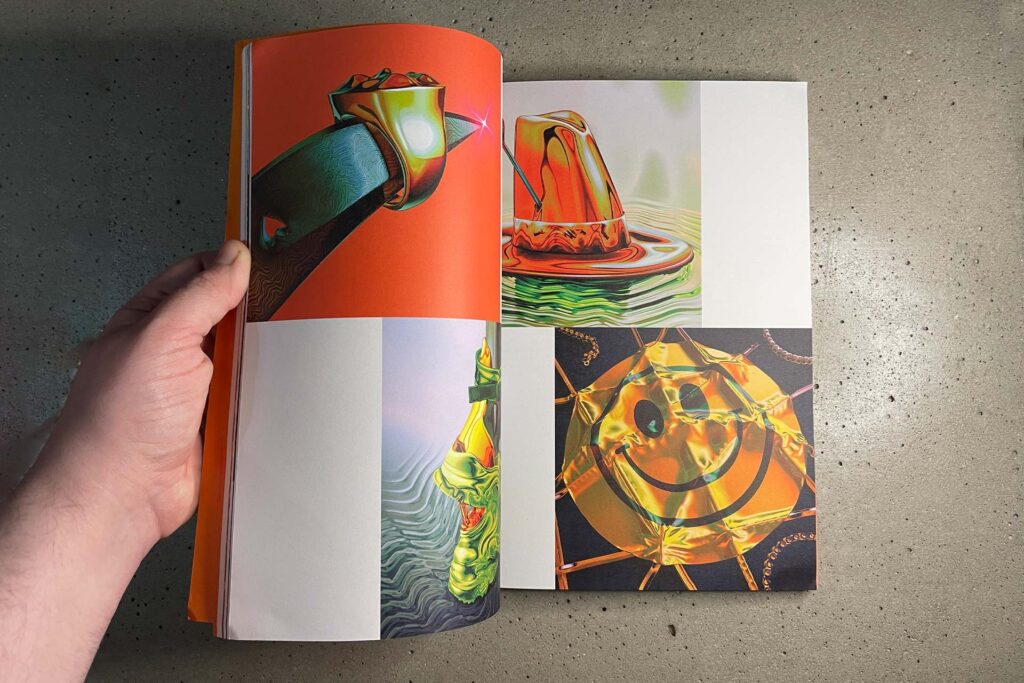
Do you feel there’s an evolution from the debut issue to this issue?
Yeah, for sure. There’s always going to be an evolution, especially when the previous time was the first time you did something. There’ll be mistakes, learnings and things you just didn’t like. For me, I like to try new things and I’m not too precious. I’ve made the conscious decision for each new issue to be a total re-design. The only consistent things will be the masthead and magazine size, the rest is totally up for grabs. I decided this for a few reasons, the first was for my own satisfaction—as I mentioned, this is a personal project of my own—I wanted to make sure I was flexing some different design skills. Secondly, the gap between magazines is pretty big, so to be up to date, things need to change anyway. This way it allows me to be responsive to the content and work it around the individual needs of a piece. You can see that in action inside this issue with Richard Turley’s interview.
What advice would you give for readers who may want to start their own journey?
I’m cheating here slightly and copying and pasting some words I wrote for a MagCulture interview because I like them. Here you go:
I think the best piece of advice I can give anyone is to always go with your gut. It can be applied to any part of the process. If you’re unsure if people will like your idea for the mag? Go with your gut. The masthead, go with your gut. The cover image, go with your gut. Choice of typeface, go with your gut. Colour choice, go with your gut. Layout decisions, go with your gut, once more for luck: go with your gut. To be clear, I’m not saying you should just make random decisions not based on any insight and research, there’s just a lot to be said for creative intuition. To be honest, this isn’t something only relevant to magazines, or publishing, or whatever, it’s pretty universal and should be applied to any creative thought, problem, project, or idea. Because, in my experience, the further and further away you get from it, the further away you get from making something you enjoy.
At which point did you start issue two, after the success of the first?
I read somewhere (great start to an anecdote, v. precise. I think it was Will Hudson from It’s Nice That who said it, but don’t hold me to it), that very few people make it past issue one of a magazine. Basically, I didn’t want to be one of those people. With that being said, I find the process incredibly rewarding, speaking to all these incredible people about the things they love to do in their spare time. It’s exhilarating hearing them talk with such passion. It was always going to be just a matter of time.
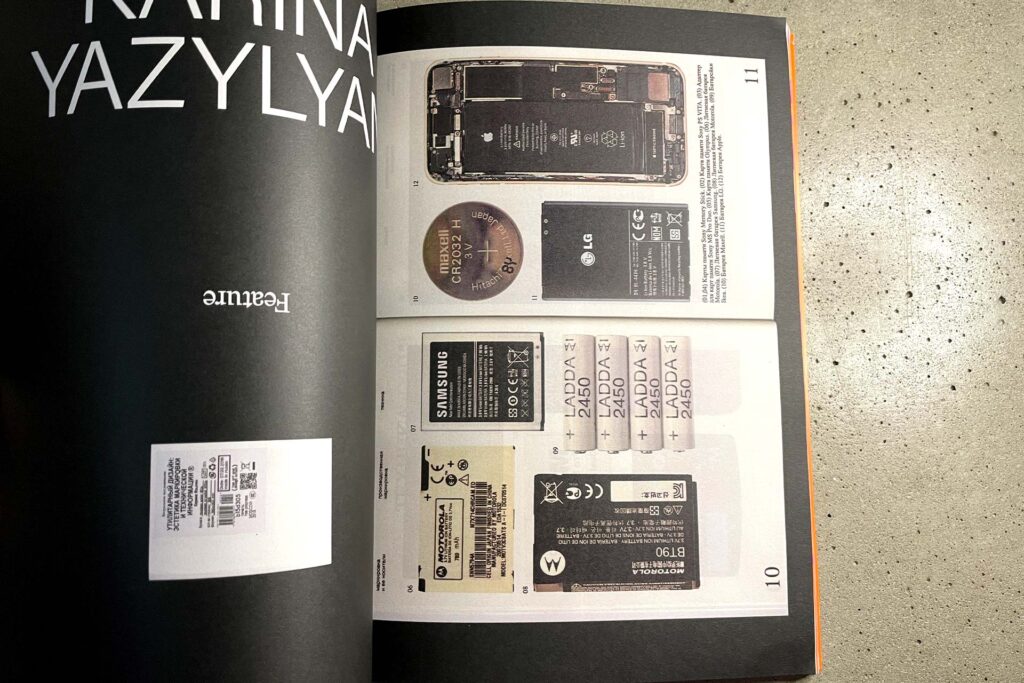
What was the process in finding contributors for the magazine? Were they hand-picked?
I keep a text file on my desktop and add links when I find anything that piques my interest. I don’t really have any rules for contributors, you basically just have to stop my grubby fingers from scrolling. Diversity in every sense of the word is super important to TWU though, this issue there was a 50/50 male/female split across our features and interviews and I’m continually trying to find people from different backgrounds. It’s obviously not perfect, but with each issue I want to improve.
Issue two has the metallic cover – can you talk about the creative decision process around the cover?
It ties in to the issue’s theme of ‘development’. The idea was for the shiny cover to reflect your own out of focus image back at you, showing you that you, yourself are still not fully formed, a yet to be finished work in progress. Also, secretly, it’s hard to pick a cover image, especially when you’re not commissioning content. Everything featured in the magazine comes from pre-existing projects. So, maybe it was a cop-out?
Designed and printed in London, is that right?
Designed in London yes, but this time printed by the wonderful printers Pressision who are based in Leeds. The first issue was printed in London by Park.
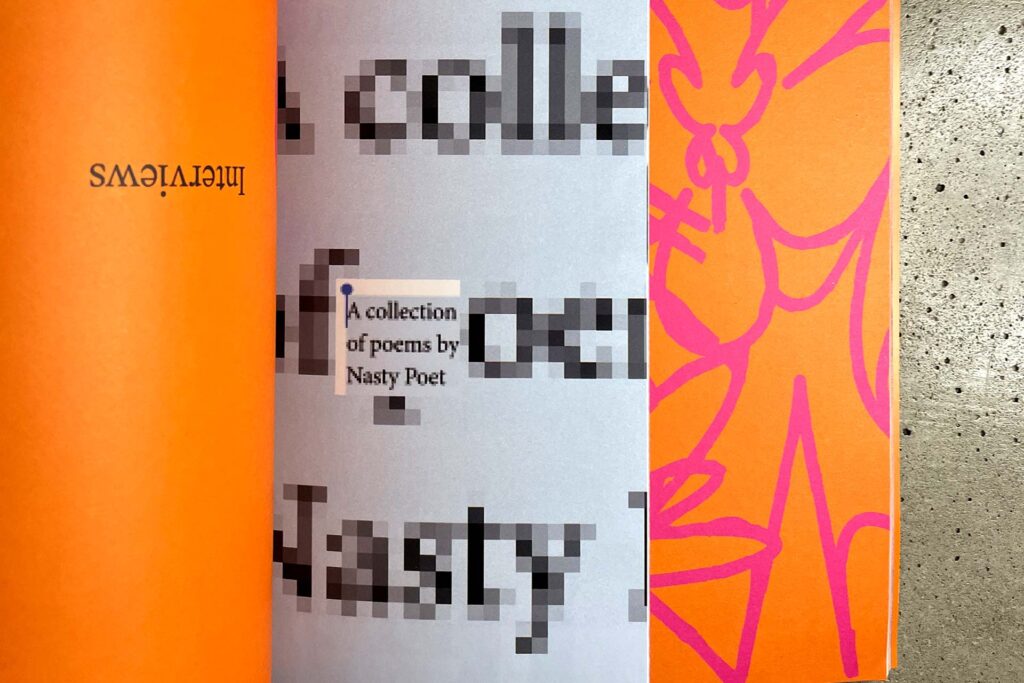
In the middle of the issue we see an inset pamphlet which is a collection of poems by Nasty Poet – this sees us move away from the usual sizing of the publication. Do to it being differently tactile, we engage differently as the reader. Do you feel that the magazine offers a creative base for experimentation to help enhance the reading experience? How important is that to you?
I really value copywriting, creative writing and writing in general. It’s not my strongest skill, which I’m not sure I should be admitting as a magazine maker, but it’s true. The reason for the insert was to create a space for writing where the words are the focus, the words themselves become the images in that sense. I also wanted something to break the flow of the magazine and make for a more engaging experience as a reader. Big shout out to The Nasty Poet, whose work features in the insert, she’s an extremely talented individual and you should follow her on her socials.
Do you feel you’ve taken any risks with this new issue, versus the first?
Risks… Probably not. I was worried with the first issue – as any one is, I’m sure. Things like, “will anyone care?”, “will anyone buy it?”, “am I wasting my time and money?” often ran through my mind. The first issue went down with relative success, so I felt confident that I could match that. Plus, I’d gained experience by going through the process and because of that, I felt I was able to offer a higher quality product.
The publication is limited to only 100 copies, making it a very limited edition. Do you think you’ll expand this in the future, or is this here to stay?
Yes and no. I toyed with the idea of expanding the print run for the second issue when I first stated working on it. Issue one sold out pretty quickly and I thought there was the demand for a few more. But, with the hit of the pandemic and people being more strapped for cash, due to the utter shit show that is the British Government, expensive niche magazines are quick to become casualties. Hence the same limited run of 100. If I ever do decide to increase the run though, I still want to retain some sort of special edition as part of that – I just need to decide what that would be.
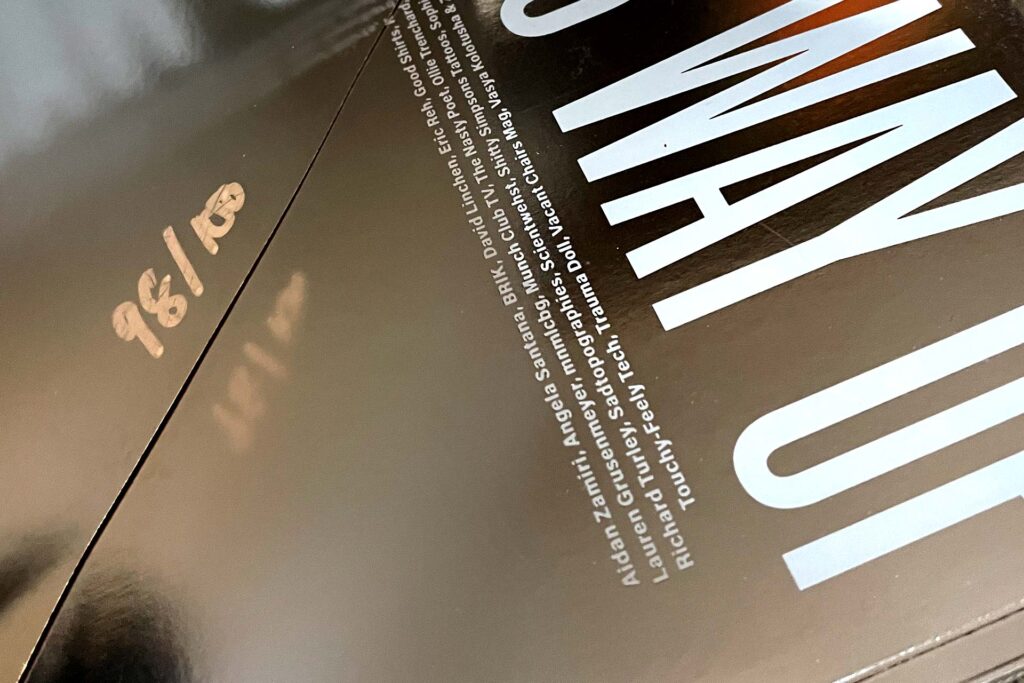
Is there a store you’d love to see ‘This Way Up’ in, which it hasn’t been sold in yet?
Yeah, good question! When I started thinking about starting a magazine, the ambition I had was for it to be stocked in the Tate Modern, I actually wrote it down in my notebook at the time. As a kid I spent most weekends in London and I’d spend a lot of my time wandering around the Tate Modern and, at the time, I thought their bookshop was the best I’d ever seen. I still rate it tbf. One day I hope to make that a reality.
In some ways the world has also been turned upside down with the pandemic, do you feel that the magazine aims to be a creative escape for people during these times?
I hope so, I try and fill it with stuff I find interesting. I enjoy finding out more about it and handing that information over to other people. All I can do is hope they like it as much as I do.
What’s next for you and ‘This Way Up’?
Honestly, I don’t know. I’d like to do issue three, but I’m not sure when that will be. With my full time job and other freelance clients I have, I took on too much work for the last few years and I’ve been feeling burnt out. I want to take some time to take stock, focus on myself, re-charge etc etc. It takes me a long time to muster up the courage to start a new issue. I have to be fully prepared for everything it entails. As soon as you send that first email asking for someone to contribute, you have a duty to them and I don’t take that lightly. When it does happen though, I might change the format up a bit. I particularly enjoy the interview side of things – which is something I’ve learnt through doing this, so issue three might be more interview heavy, but honestly, who knows?
Thanks so much for the chat!
You’re welcome, thank you for reading my drivel.
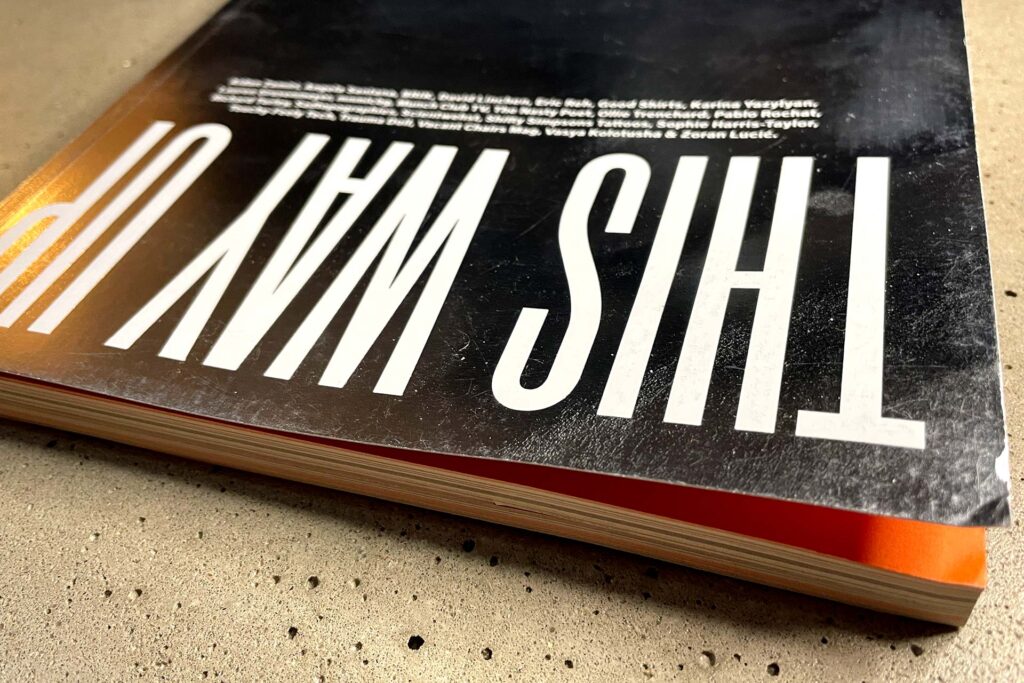
This Way Up Website / This Way Up Twitter
You can find the magazine for sale at (at time of writing): Village Books, Rare Mags, Magalleria & Colours May Vary

Enjoying Overleaf?


You May Also Like

Spotz and Racquet co-hosting ‘Tennis in NYC’ release party this August
August 5, 2022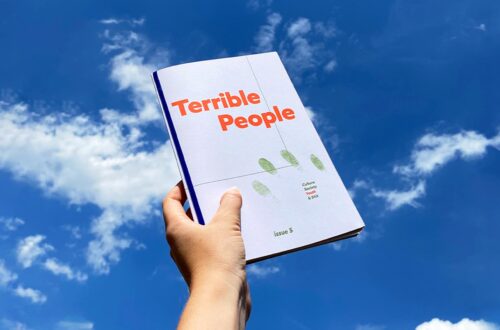
Terrible People dives into the theme of youth in new issue and introduces Mean Mail collaboration
March 24, 2023